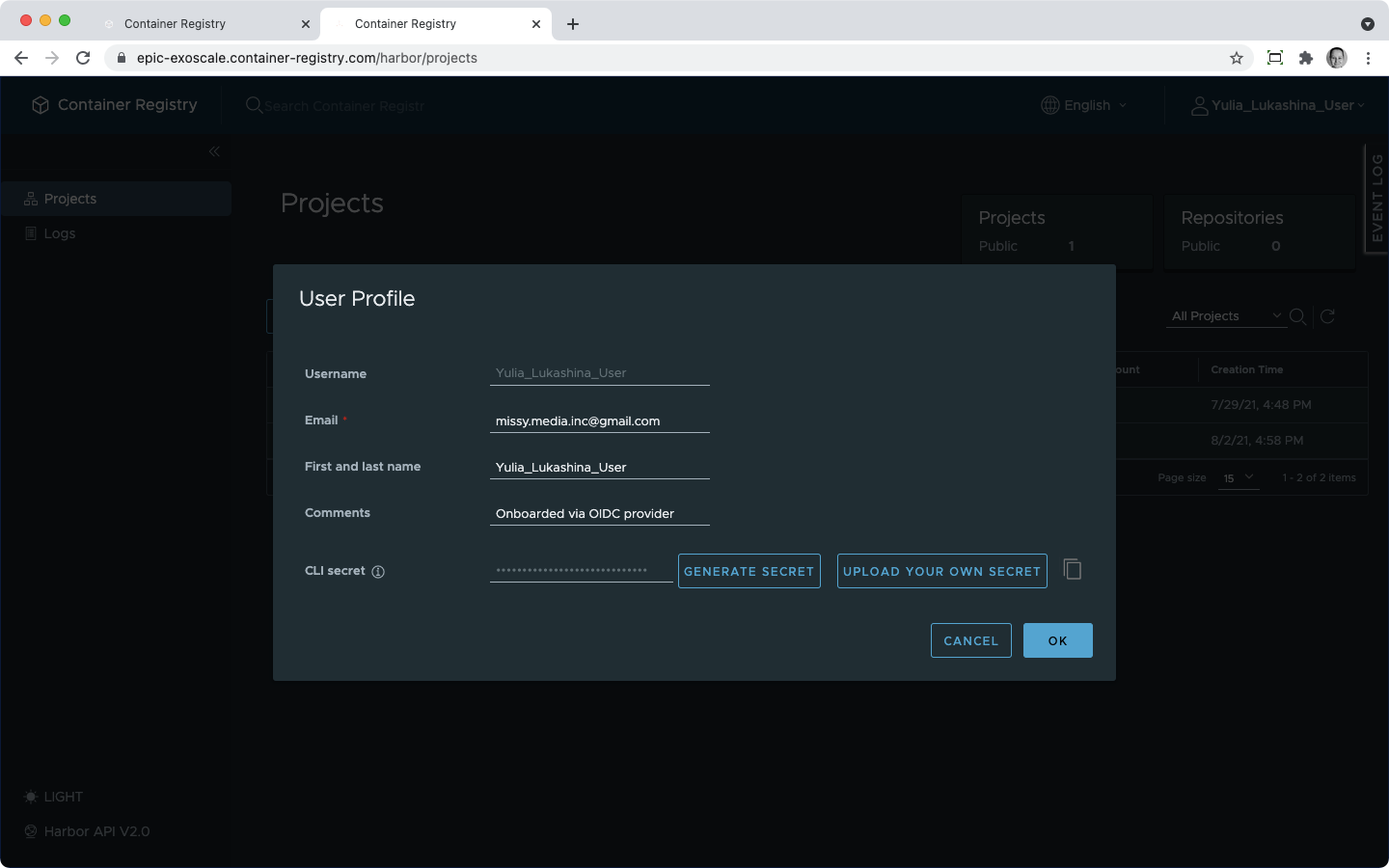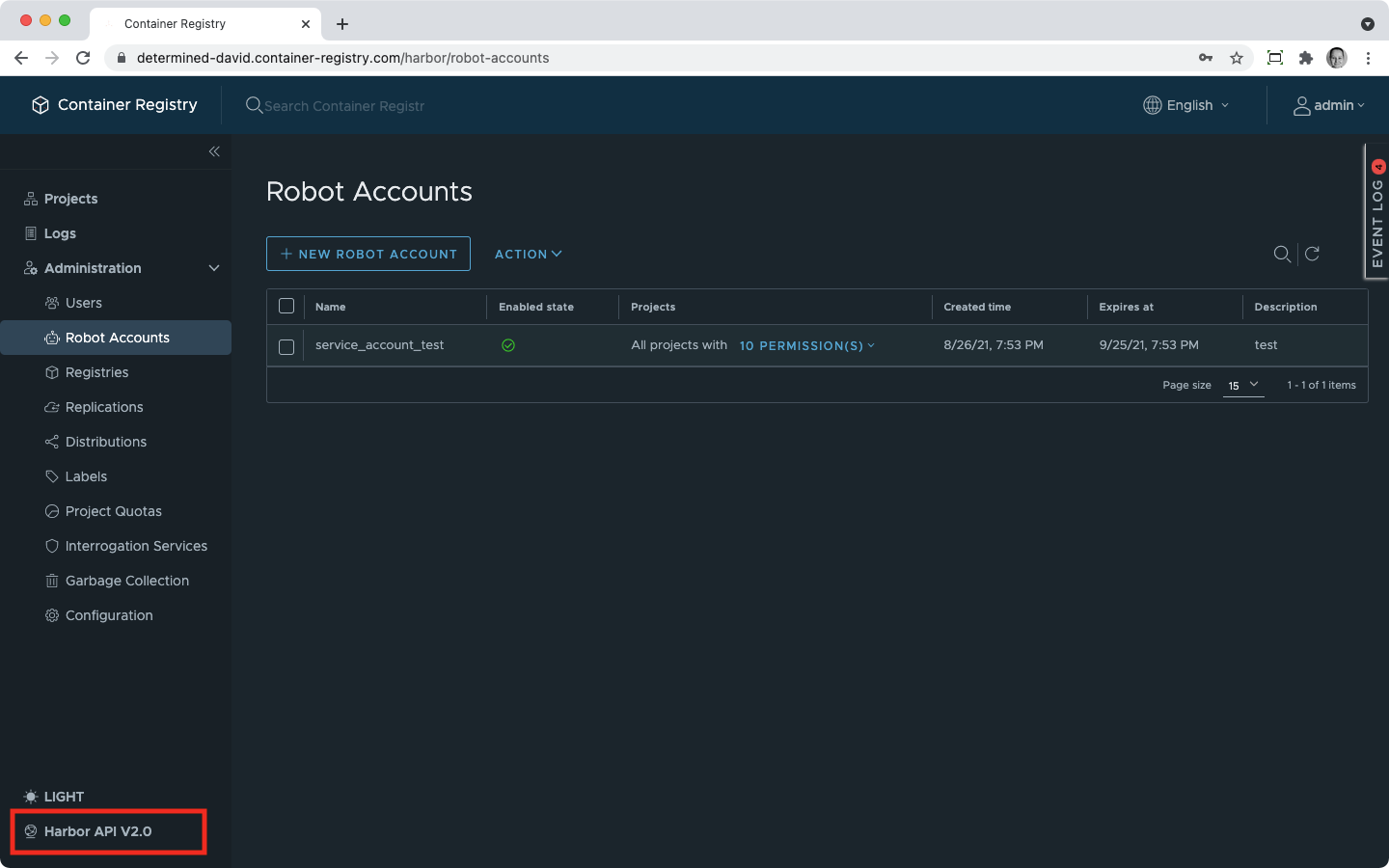When you log in to your Container Registry account as a user, you will see the following console.
If you log in as an administrator, you will see an additional administration section. Refer to our Administration Guide for the GUI features overview.

The navigation pane provides you access to your projects and logs.
Both logs and projects have a detailed view where you can search and filter your projects or logs (1) and set the page size to increase or limit the number of displyed items (2).

Event Log stores information about local events that do not have directly to do with your registry.
User profile and settings contain your user name (which can’t be changed after your initial registration), your email, your name, and some additional information. Besides, in your user profile, you can access and manage your CLI secret.

If you click on the three dots next to the CLI, you will see two additional options:

To search through all project names, repository names, and charts, use the search field on the top pane of the console.
In the upper right corner, you can switch language and select from one of the following:
In the bottom left corner of the console, you can change the colour theme of the interface from light to dark. Next to it, you have a link that brings you to our Swagger-based API documentation.
